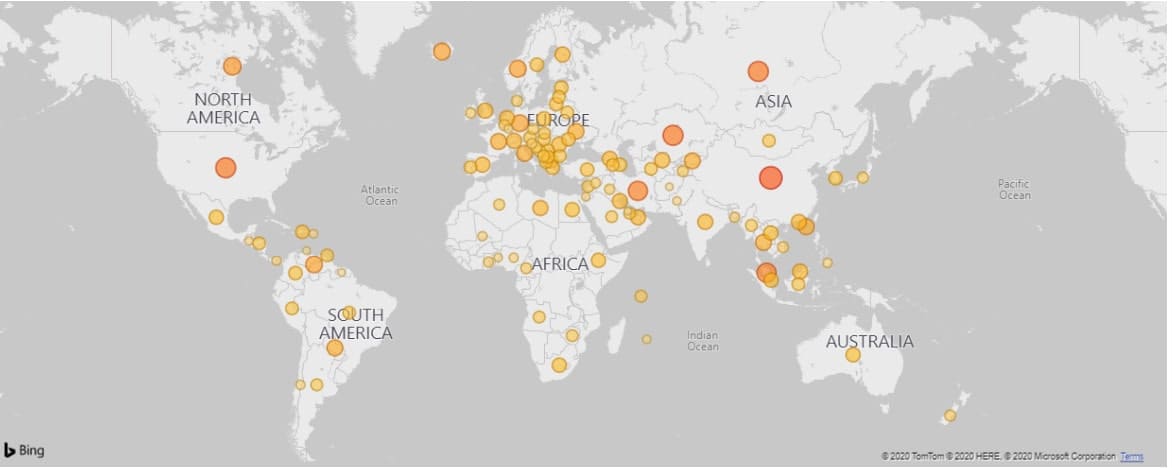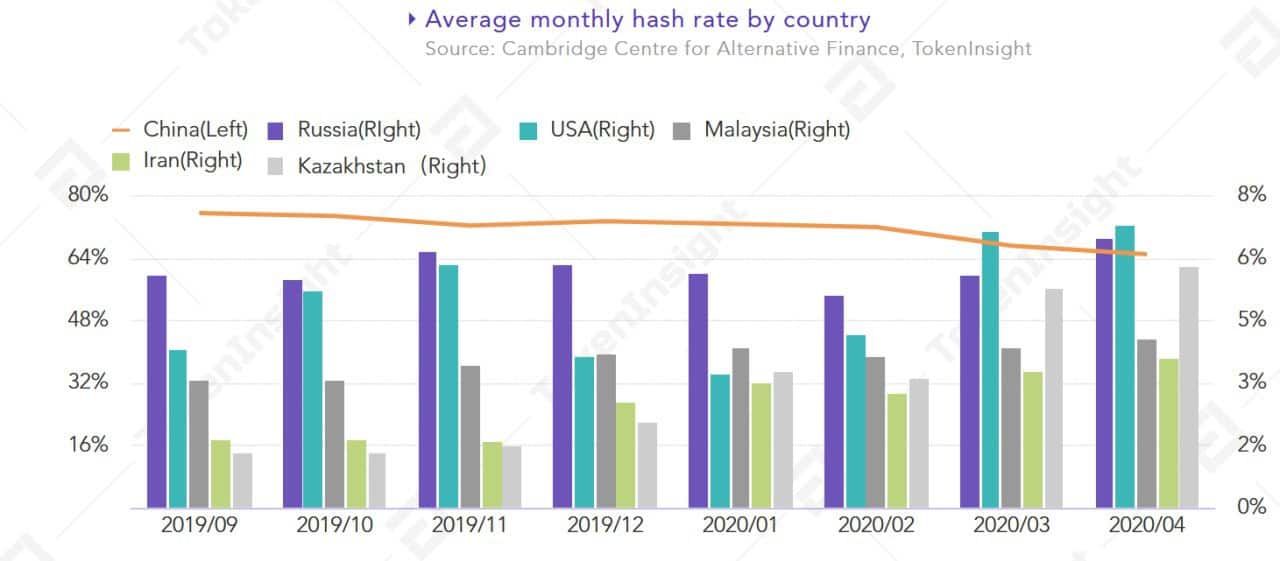The Bitcoin hash rate appears to be migrating west after the percentage of BTC mining taking place in the United States increased by 78%, leading into 2020.That’s according to the latest data from the Cambridge Center for Alternative Finance (CCAF), presented in a report by TokenInsight, which shows the US-based Bitcoin hash rate rose from 4.06% to 7.24% between September of 2019 and April of 2020.US-Based Bitcoin Hash Rate Climbs 78%While that moved the US into second place in CCAFs global hash rate rankings, it still leaves the majority of Bitcoin’s mining power within China’s borders.Bitcoin hash-rate map, source: CambridgeHowever, while China currently accounts for an estimated 65.08% of Bitcoin’s hash rate, that’s a rather sizable drop from last September’s figure of 75.63%. The
Topics:
Greg Thomson considers the following as important: AA News, Bitcoin Hash Rate, btcusd, btcusdt, China
This could be interesting, too:
Chayanika Deka writes Yuga Labs Secures Major Win as SEC Closes Investigation Without Charges
Andrew Throuvalas writes Bitcoin Soars Back To ,000 After BlackRock CEO Says “Buy The Dip”
Chayanika Deka writes XRP, SOL, and ADA Inclusion in US Crypto Reserve Pushes Traders on Edge
Chayanika Deka writes Why Arthur Hayes Is Bullish on Bitcoin Under Trump’s Economic Strategy
The Bitcoin hash rate appears to be migrating west after the percentage of BTC mining taking place in the United States increased by 78%, leading into 2020.
That’s according to the latest data from the Cambridge Center for Alternative Finance (CCAF), presented in a report by TokenInsight, which shows the US-based Bitcoin hash rate rose from 4.06% to 7.24% between September of 2019 and April of 2020.
US-Based Bitcoin Hash Rate Climbs 78%
While that moved the US into second place in CCAFs global hash rate rankings, it still leaves the majority of Bitcoin’s mining power within China’s borders.

However, while China currently accounts for an estimated 65.08% of Bitcoin’s hash rate, that’s a rather sizable drop from last September’s figure of 75.63%. The report states:
“Since September 2019, the estimated hash rate in China has shown a slow downward trend, which has dropped from 75.63% to 65.08%; while the United States has begun to increase from 4.06% to 7.24%, up by 78.33%.”
As nearly 14% of Bitcoin’s mining power left China in the time period mentioned, it appeared to depart through the western border.
Kazakhstan, with which China shares a border to the west, became the fourth most significant source of Bitcoin mining power in the world at that time. Hash rate emanating from within Kazakhstan increased 334%, leading into 2020 – from 1.42% to 6.17% – in a move which TokenInsight characterized as “unexpected.”

Kazakhstan Arrives – Bitcoin Mining Transforms
That followed an announcement by Kazakhstan’s lawmakers in December 2019 that any cryptocurrency gained by mining won’t be subject to taxation until it is converted into fiat. The same announcement also made sure to note that mining farms would be taxed like any other technological data center, yet the 334% jump in hashrate suggests that didn’t deter Bitcoin Kazakh Bitcoin miners.
The report by TokenInsight explored the effect of Bitcoin’s halving on the mining industry. The report states that 2020 will be a transformative year for Bitcoin mining.
“With the conclusion of the Bitcoin third halving, there would be a sell-off of old mining machines in the market. Therefore, 2020 will be a key year for the progressive transformation of the mining industry,” reads the report.
Specifically, that means the gradual disappearance of unstructured mining operations over time, to be replaced by “efficient, professional and structured management strategies,” states TokenInsight.
